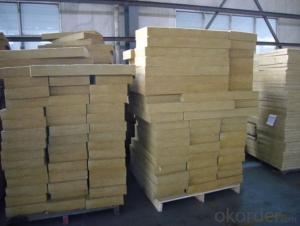Roofing insulation panels are a game-changer in the construction industry. They not only enhance the energy efficiency of a building but also contribute to a comfortable living environment. In this guide, we’ll explore the best materials for roofing insulation panels, their benefits, and how to choose the right one for your project.
The Science Behind Insulation
Before we dive into the materials, let’s understand the science behind insulation. Insulation works by reducing the rate of heat transfer, which means it helps to keep your home warm in the winter and cool in the summer. This is achieved by trapping pockets of air, which are poor conductors of heat.
Why Choose Roofing Insulation Panels?
Roofing insulation panels are an excellent choice for several reasons. They are easy to install, durable, and can significantly reduce energy consumption. Moreover, they can also help to reduce noise pollution and improve the overall aesthetics of your roof.
Types of Insulation Materials
There are several types of insulation materials available in the market. Each has its own set of advantages and disadvantages. Let’s take a look at some of the most popular ones.
1. Fiberglass
Fiberglass is one of the most common insulation materials used in roofing insulation panels. It is made from fine fibers of glass and is known for its durability and resistance to fire and insects. However, it can be irritating to the skin and respiratory system if not handled properly.
2. Mineral Wool
Mineral wool is another popular choice for insulation. It is made from natural materials like stone or slag and is known for its excellent sound absorption and fire resistance. It is also more environmentally friendly compared to other materials.
3. Polystyrene (EPS or XPS)
Polystyrene is a lightweight and cost-effective insulation material. It is available in two forms: extruded polystyrene (XPS) and expanded polystyrene (EPS). Both forms provide good insulation, but XPS has a higher R-value, making it more efficient.
4. Polyisocyanurate (PIR)
Polyisocyanurate is a rigid foam insulation material with a higher R-value than polystyrene. It is more expensive but offers better insulation and durability. It is also resistant to moisture, making it suitable for areas with high humidity.
5. Spray Foam
Spray foam insulation is a versatile option that can be applied to various surfaces. It expands to fill gaps and crevices, providing an airtight seal. It has a high R-value and is excellent for moisture control. However, it can be more expensive and requires professional installation.
6. Cellulose
Cellulose insulation is made from recycled paper products and is an eco-friendly option. It has good insulation properties and is also fire-resistant. However, it can absorb moisture if not properly treated, which can lead to mold growth.
Factors to Consider When Choosing Insulation Materials
When choosing the right insulation material for your roofing project, there are several factors to consider. These include the R-value, cost, environmental impact, fire resistance, and ease of installation. It’s essential to weigh these factors against your specific needs and preferences.
1. R-Value
The R-value is a measure of a material’s resistance to heat flow. The higher the R-value, the better the insulation. Different materials have different R-values, so it’s crucial to choose one that suits your climate and energy efficiency goals.
2. Cost
Insulation materials can vary significantly in price. While some materials may offer better insulation, they might also come with a higher price tag. It’s essential to balance the cost with the expected energy savings and long-term benefits.
3. Environmental Impact
With growing concerns about climate change, choosing an insulation material with a lower environmental impact is a wise decision. Materials like cellulose and mineral wool are more eco-friendly options.
4. Fire Resistance
Fire safety is a critical consideration in any construction project. Some materials, like fiberglass and mineral wool, have inherent fire-resistant properties, making them safer choices.
5. Ease of Installation
The ease of installation can also affect your decision. Some materials, like spray foam, require professional installation, while others, like fiberglass, can be installed by homeowners with basic skills.
Installation Tips
Proper installation is crucial for the effectiveness of your insulation. Here are some tips to ensure a successful installation:
1. Inspect the Roof: Before installing insulation, inspect the roof for any damage or leaks. Repair any issues before proceeding.
2. Ensure Proper Ventilation: Good ventilation is essential for preventing moisture buildup, which can compromise the insulation’s effectiveness.
3. Follow Manufacturer’s Guidelines: Always follow the manufacturer’s guidelines for installation to ensure the best results.
4. Seal All Gaps and Seams: Make sure to seal all gaps and seams to prevent air leaks and improve the insulation’s performance.
5. Regular Maintenance: Regularly inspect and maintain your insulation to prolong its life and effectiveness.
The Bottom Line
Roofing insulation panels are a smart investment for any building. They not only help to reduce energy costs but also contribute to a healthier and more comfortable living environment. By understanding the different materials and considering the factors mentioned above, you can make an informed decision and choose the best insulation for your needs. Remember, the right insulation can make all the difference in your home’s energy efficiency and comfort.
So, whether you’re building a new home or upgrading an existing one, don’t overlook the importance of insulation. It’s an investment that pays off in the long run, both in terms of energy savings and a better living experience.

